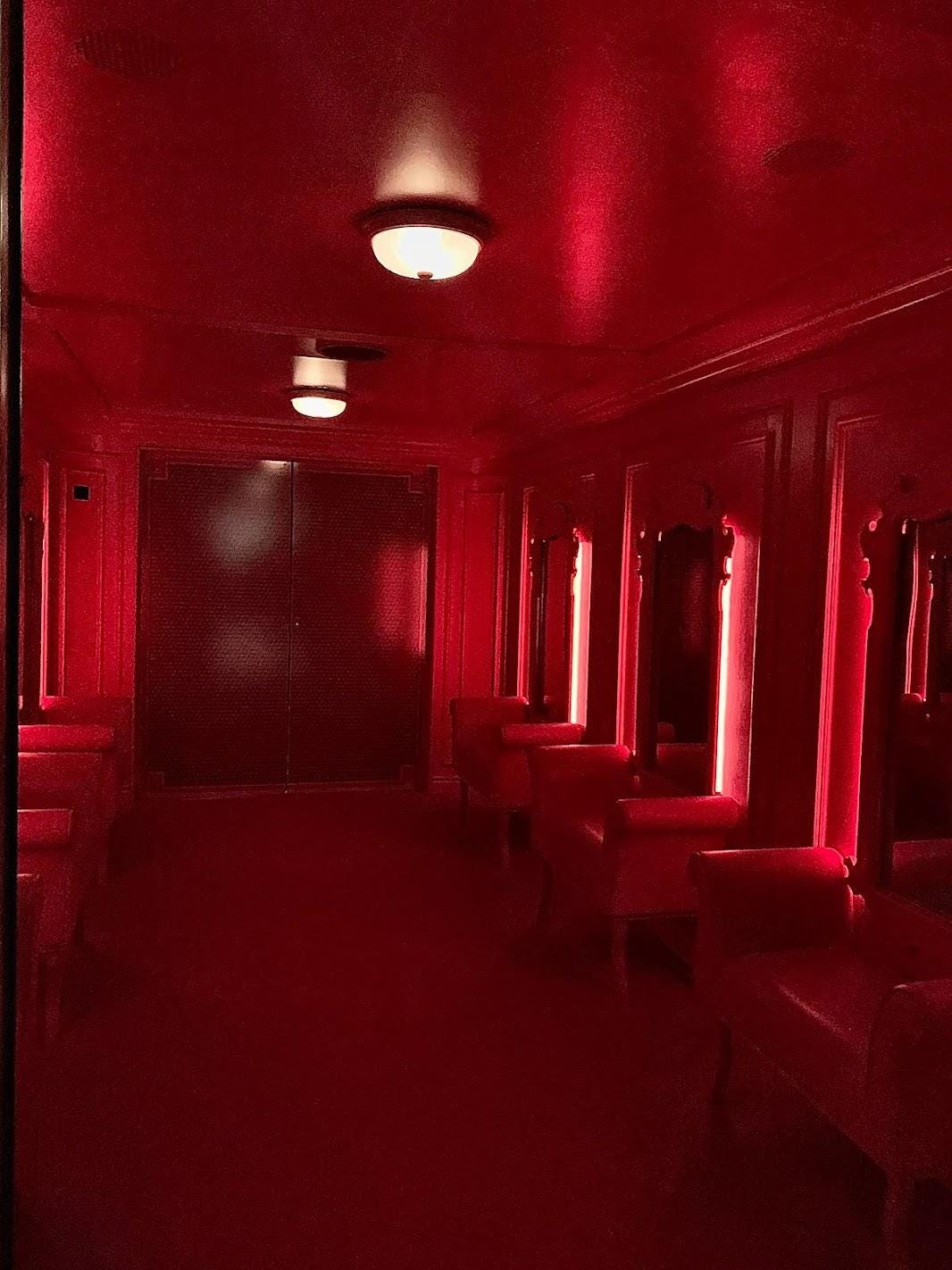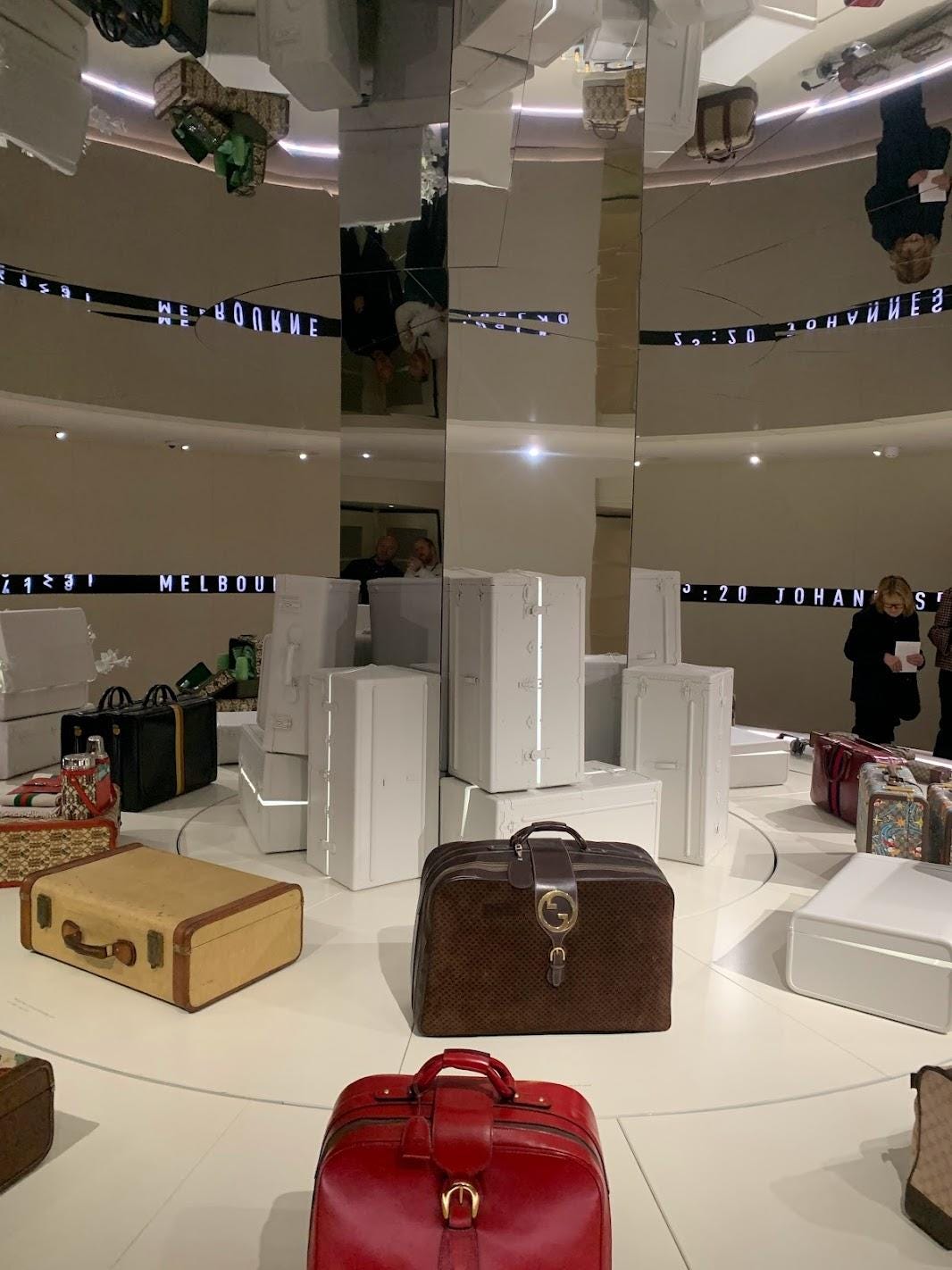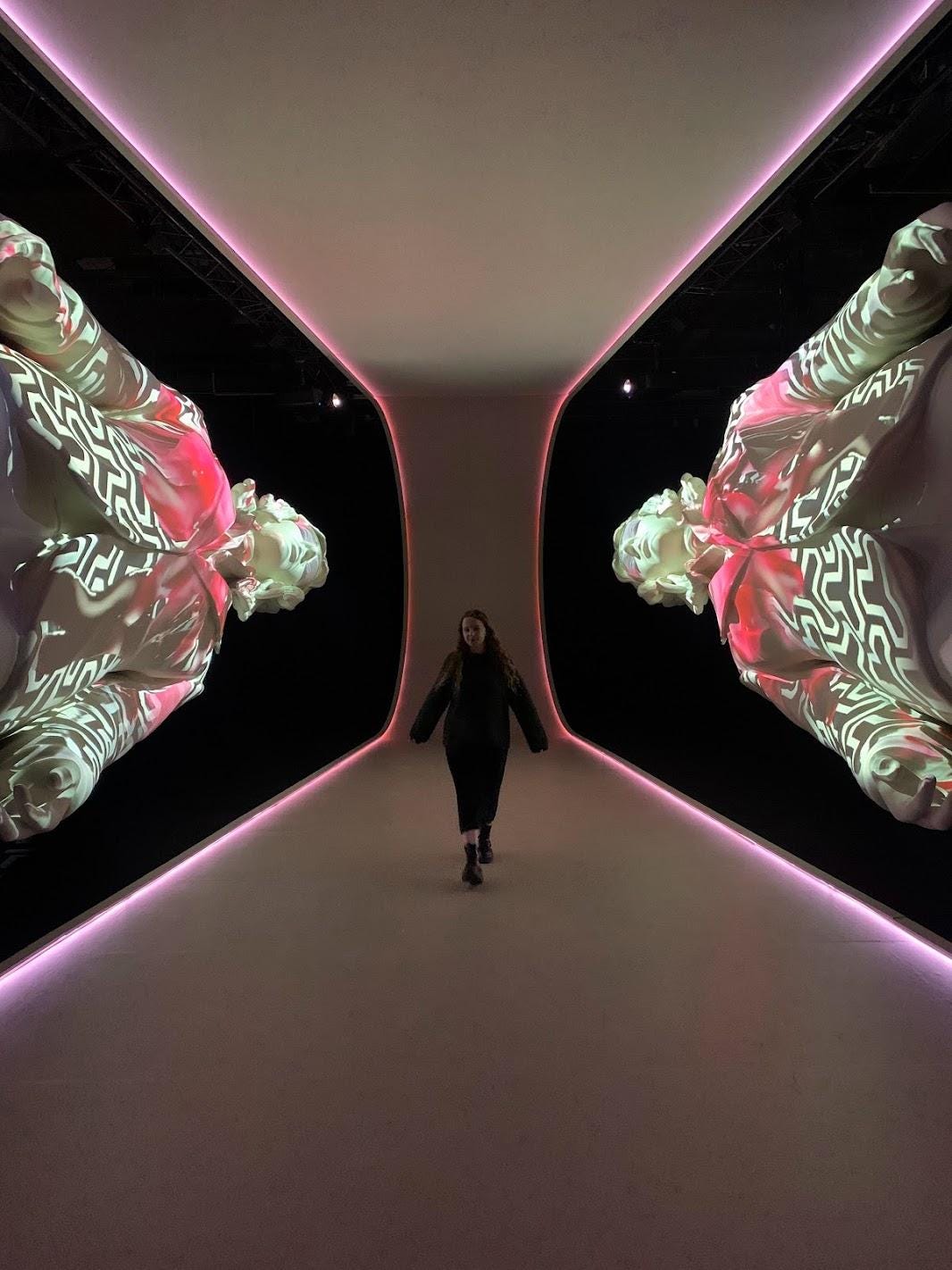The Gucci ‘Cosmos’ exhibition at 180 The Strand teetered between excellently showing off Gucci artefacts and seemingly irrelevant light shows. Room after room was immersive and Instagramable, most bizarrely in a zoetrope-type set-up where a horse cantered around poorly lit Gucci equestrian gear.
I did, however, thoroughly enjoy this exhibition. Whilst parts were clearly conceived of for visual impact before their actual relevance was decided, other sections prioritised the pieces on display and authentically told the story of Gucci’s life’s work.
The exhibition started on an interesting note, beginning with the ‘Ascending Room’. The entrance and waiting area were dressed like the Savoy Hotel, where Guccio Gucci first worked in London, and where he was exposed to the luxury luggage that captured his imagination. The deep red ‘elevator’ we had to take to get to the exhibition was an immersive and exciting way to begin. This red is synonymous with the fashion house, and by relating it to the actual interior of the original lift at the Savoy, I met it with a new appreciation.
The staff throughout this experience were extremely knowledgeable, and as we entered the next room decked with a carousel of vintage luggage, several offered facts about what we could see. There was, for instance, a luggage set made from boar leather - used during the war when cow leather was in short supply - which is now an illegal material. There was also one of the oldest Gucci suitcases in the world, made by Guccio himself. This room highlighted the importance of luggage to the identity of the brand, effectively maintaining the narrative thread of Gucci’s early career from the first room.
The next room, a long cork-covered corridor with a timeline was informative, but did feel like the gateway to a much more self-aggrandising part of the exhibition. The lack of particular visual features in the more information-dense section suggested that this was not the most important part of the curator’s vision.
The next two rooms felt very much to be geared towards taking pictures. The first was the frightening horse zoetrope; I left as quickly as I could and thus regrettably can’t provide too much insight. The second, in opposition, a bright white room called ‘Eden’.
‘Eden’ was dedicated to the iconic Gucci floral print created on a scarf for Grace Kelly, Princess of Monaco. Featuring large white bugs scaling the ceiling, and mirrors on every wall, it felt to me as though the beautiful pieces on display melted into the background in favour of looking at oneself.
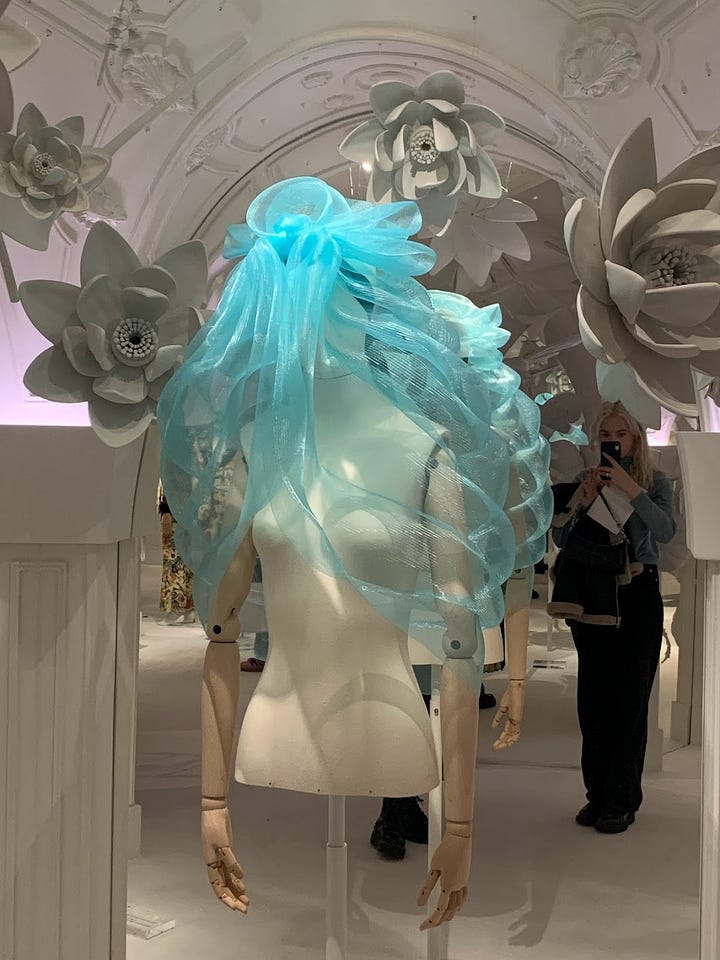
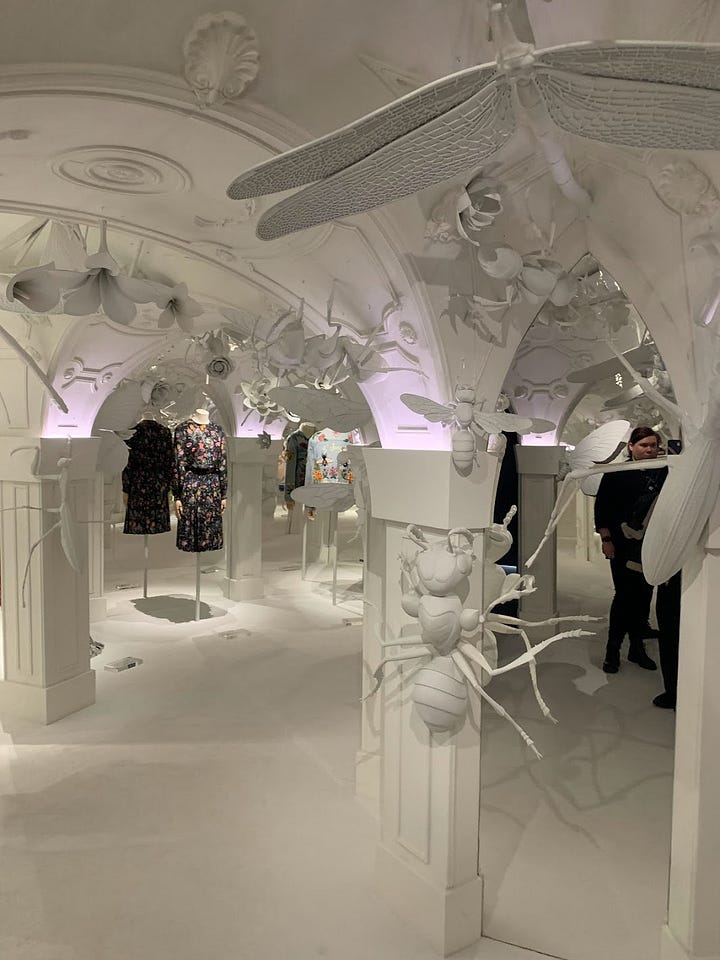
This turquoise fascinator was the most exquisitely crafted piece in the whole exhibition, being at once a fanciful accessory, and a sculptural piece that commanded gravitas. It was, however, along with all of the other pieces in this room, lost in the curation, multiplied in the many mirrors but neither lit nor labelled in a way that afforded it any significance. More than this, the piece that this entire section was supposed to be woven around, the scarf for Grace Kelly, was also positioned in a way that made it unimportant. Firstly, I was unsure which of the two scarfs on display was that one, and secondly they were in the cavity of a dim archway obscured when you entered the room by a central pillar. The experience of this room captured the fanciful mood that I believe the curators were aiming for, but in doing so the pieces were woefully under-represented.
Central to the ridiculousness of this exhibition was the next room ‘Two’. Twin, larger-than-life polystyrene figures purportedly inspired by Gulliver’s Travels lay on their sides, with various Gucci outfits intermittently projected onto them. It was clearly thought up before it was labelled, and perhaps the curator simply had these two figurines lying about and had to make use of them somehow.
‘Archivio’ did rescue the exhibition. Bright blue and covered with mirrors it was again clearly designed for pictures. However, the bags and accessories selected to show reinstated the importance of individual pieces, and especially luggage, within the Gucci legacy. This section particularly highlighted the innovation of the bamboo handle, for which Gucci is known. The interactive draws opened to show luxurious scarves and magazines, and the information felt appropriate and far less gimmicky than in the middle of the exhibition.
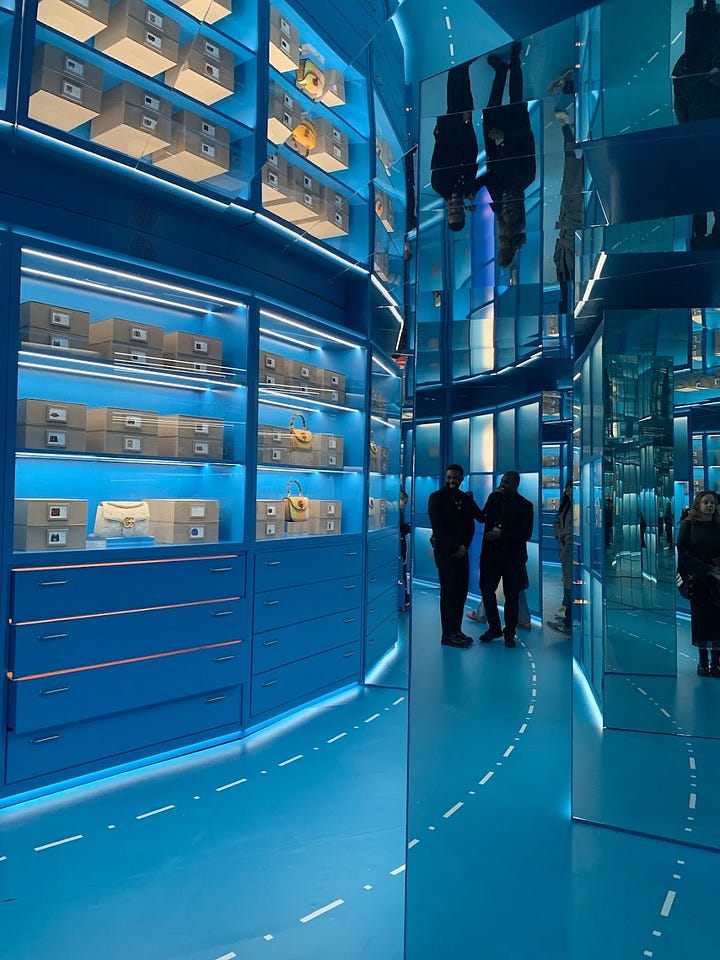
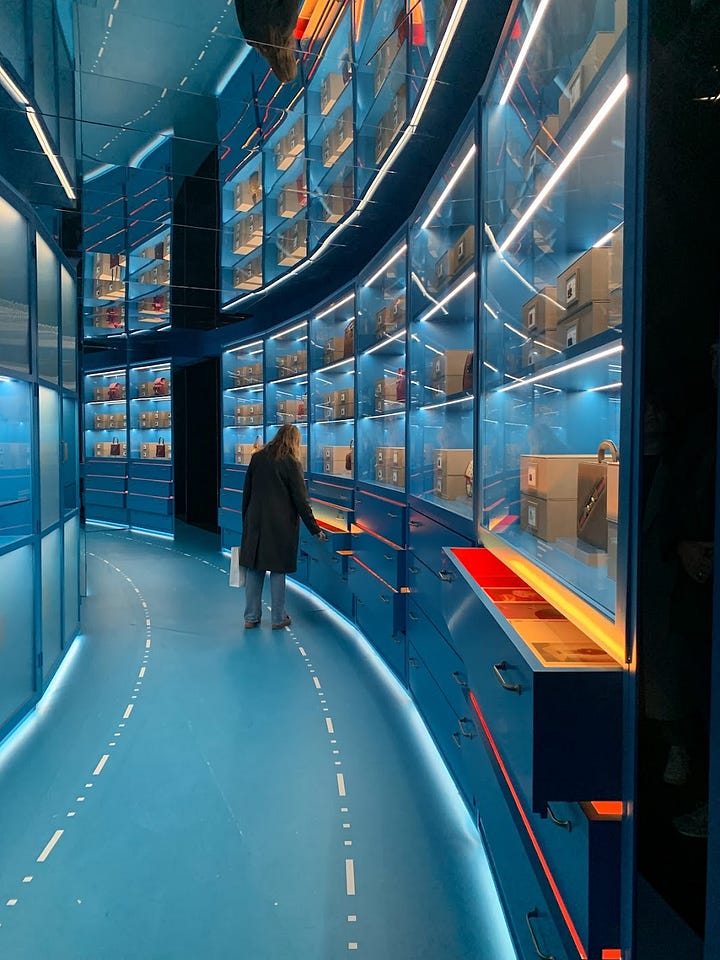
Finally, the ‘Cabinet of Wonders’ offered a pleasing end. With drawers that opened periodically to reveal incredible Gucci pieces, this cabinet was designed to highlight their rare craftsmanship. I found myself waiting excitedly to see what would roll out of the deep red box, which chromatically circled back to the ‘Ascending Room’ in a satisfying way.
Gucci ‘Cosmos’ was interesting both because of the pieces that it showed and as an example of the phenomenon of social media-based curating. Without being too disparaging, I must admit that the set-up made it onto my feed; the sculptured white and many mirrors of the ‘Flora’ room were excellent for pictures. We should be careful, however, to absolutely denigrate a curatorial approach like this, as it allows the exhibition to have extended reach. Undoubtedly, people who were not otherwise interested in fashion or design history attended this exhibit because of its mesmeric photogenicness. I was not bored once throughout and came away having learned rather a lot about the history of Gucci and been impressed by the beauty and craftsmanship of design objects, which surely is of overriding importance.




